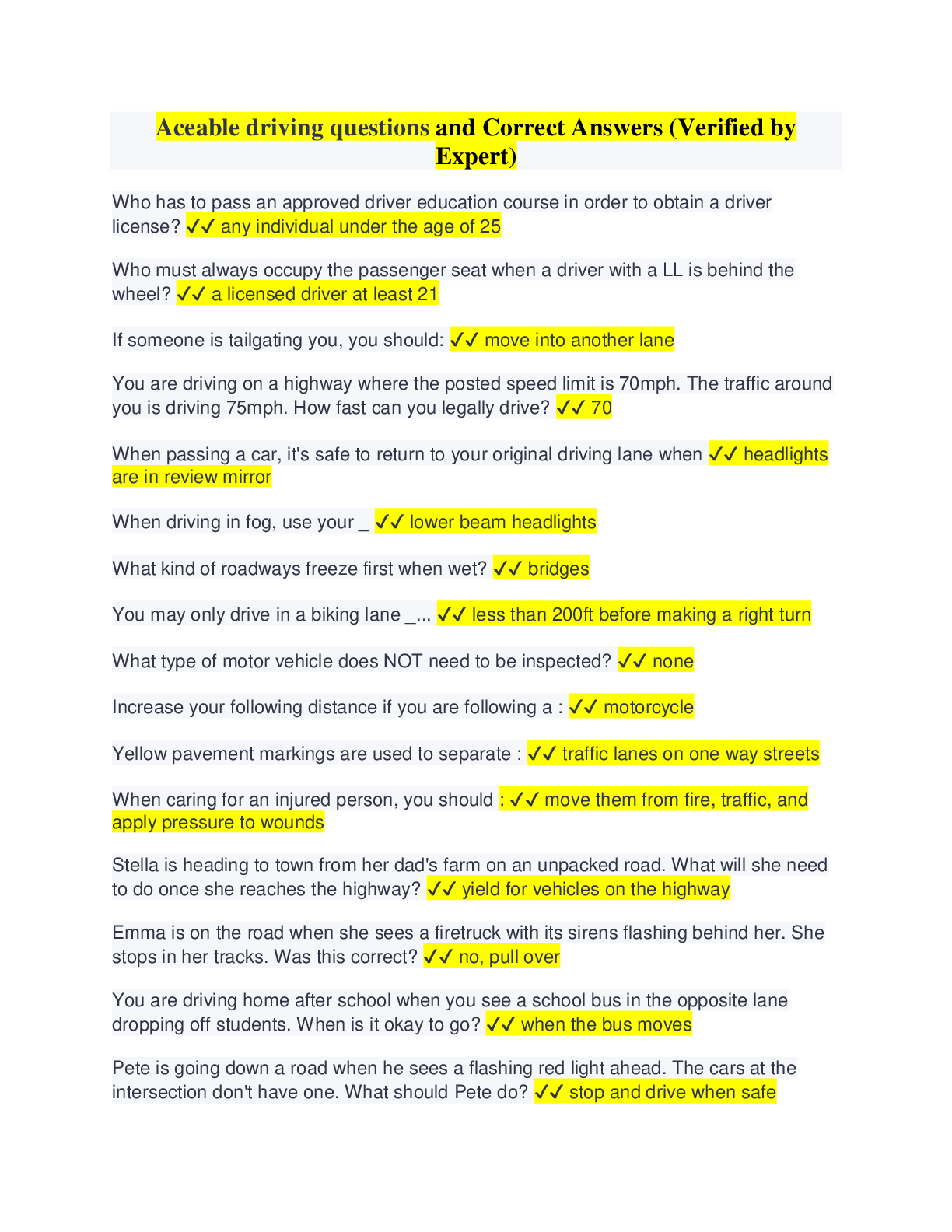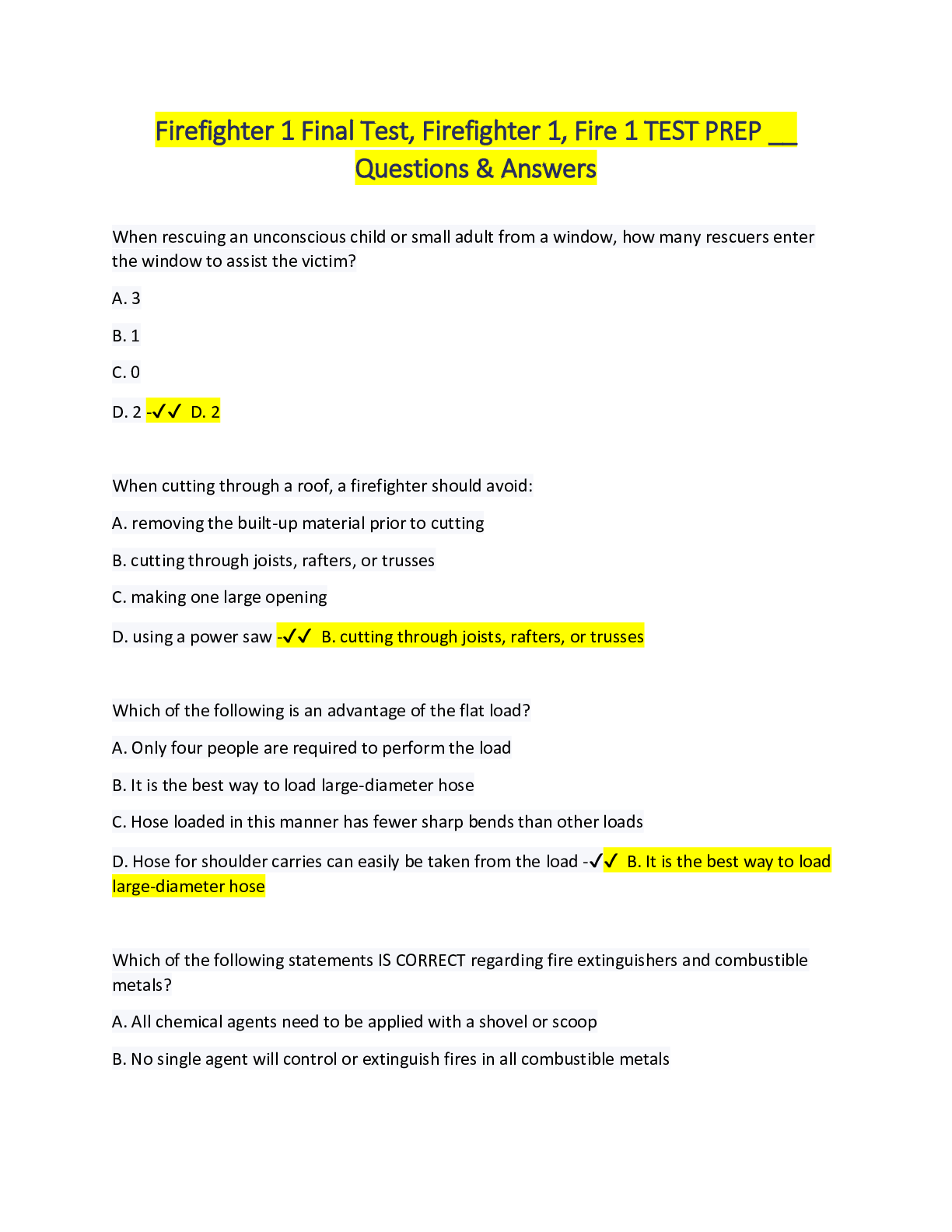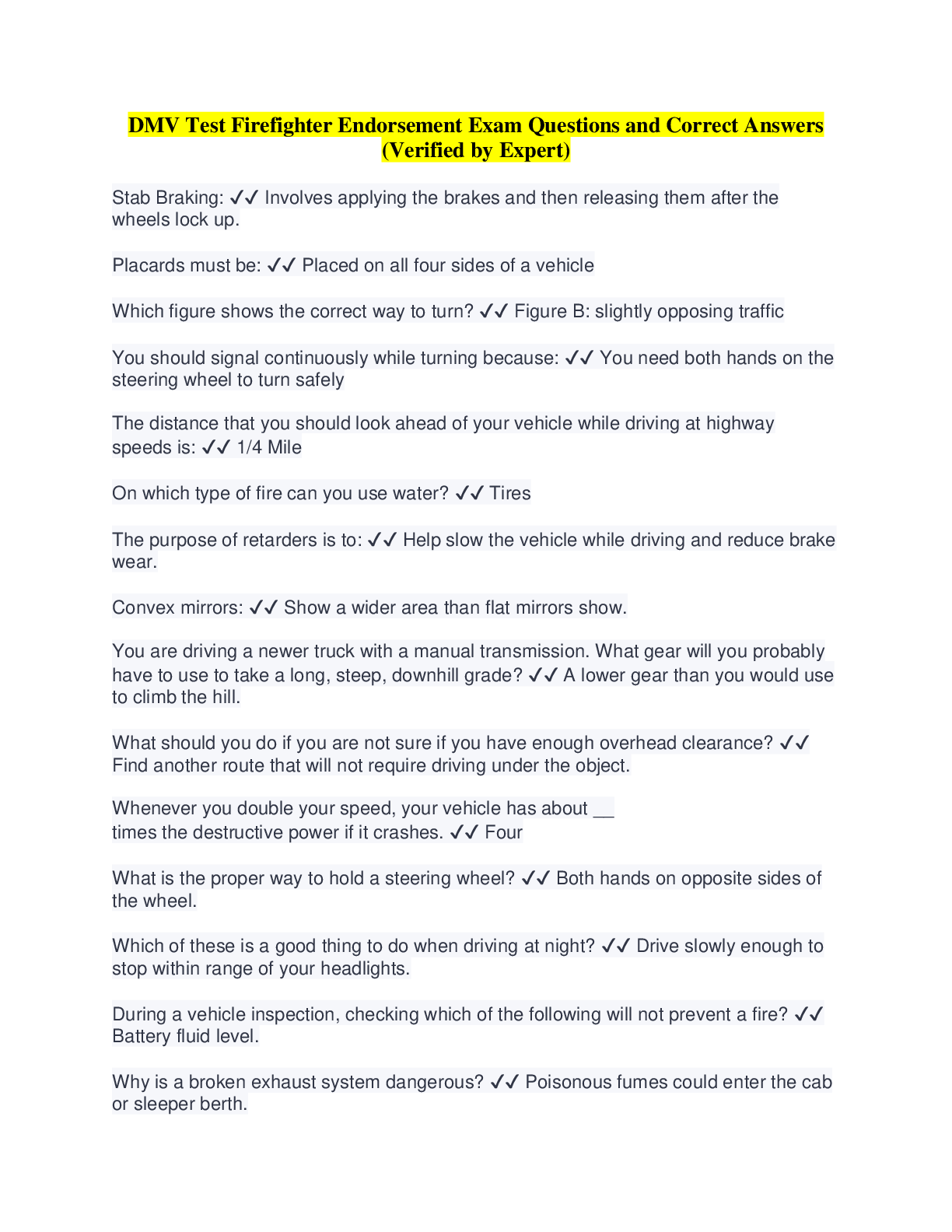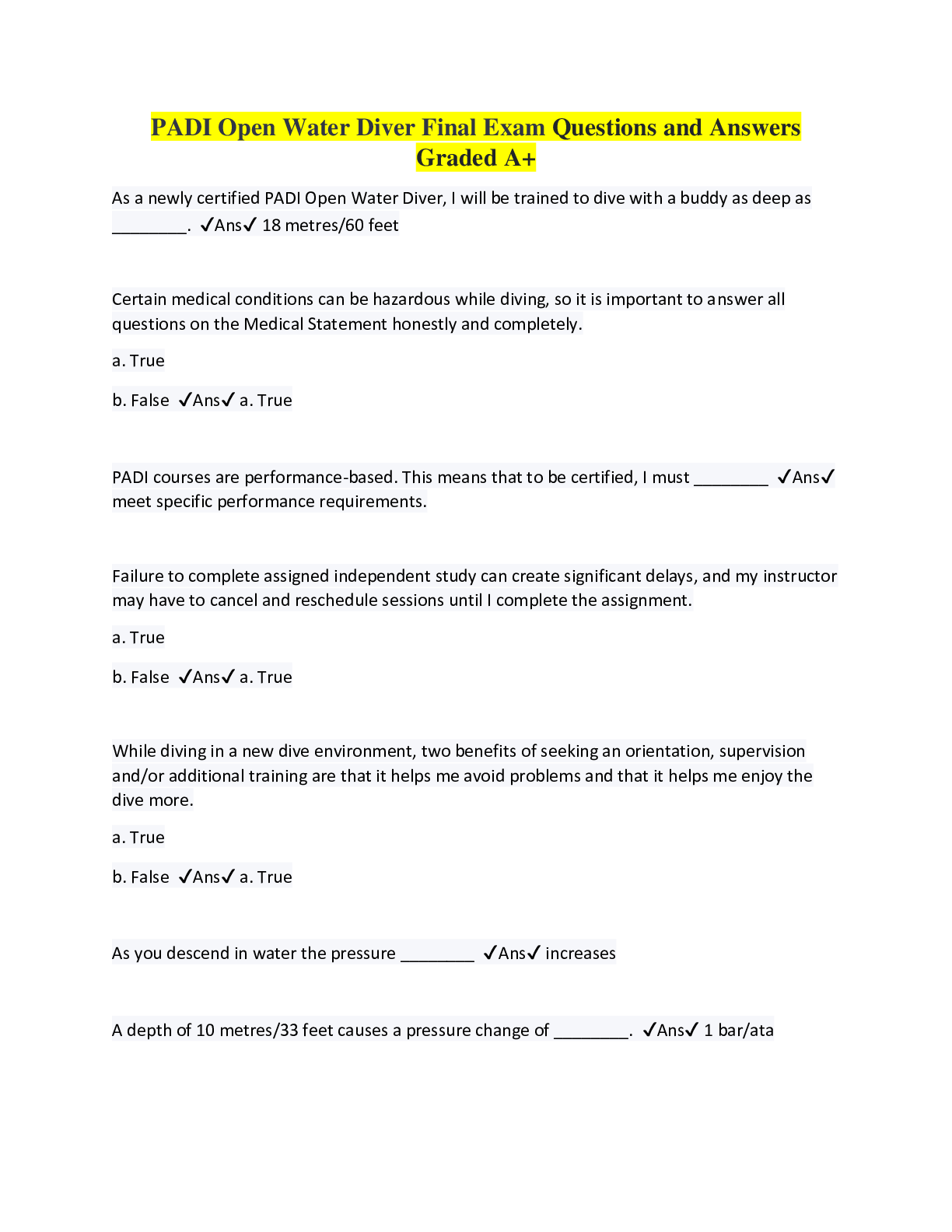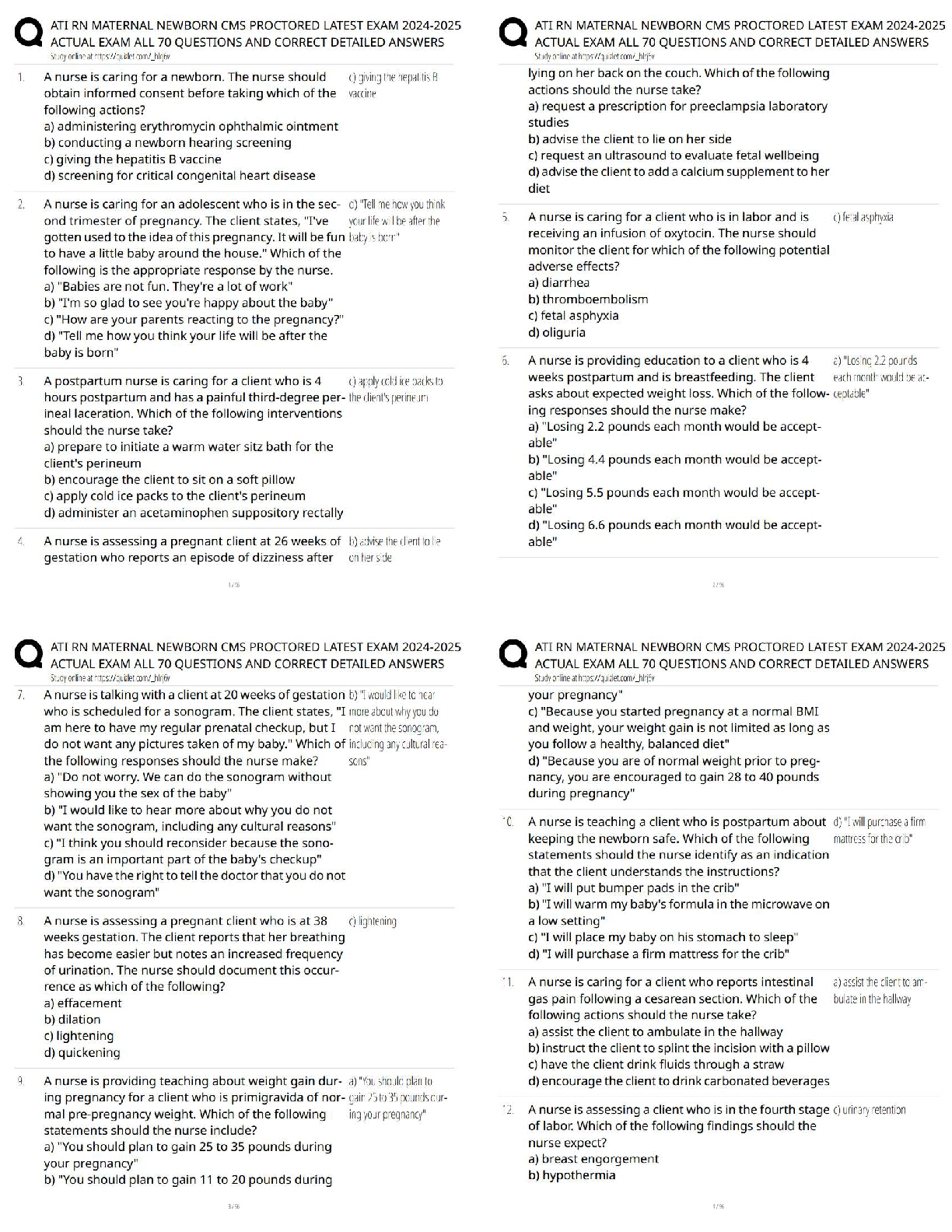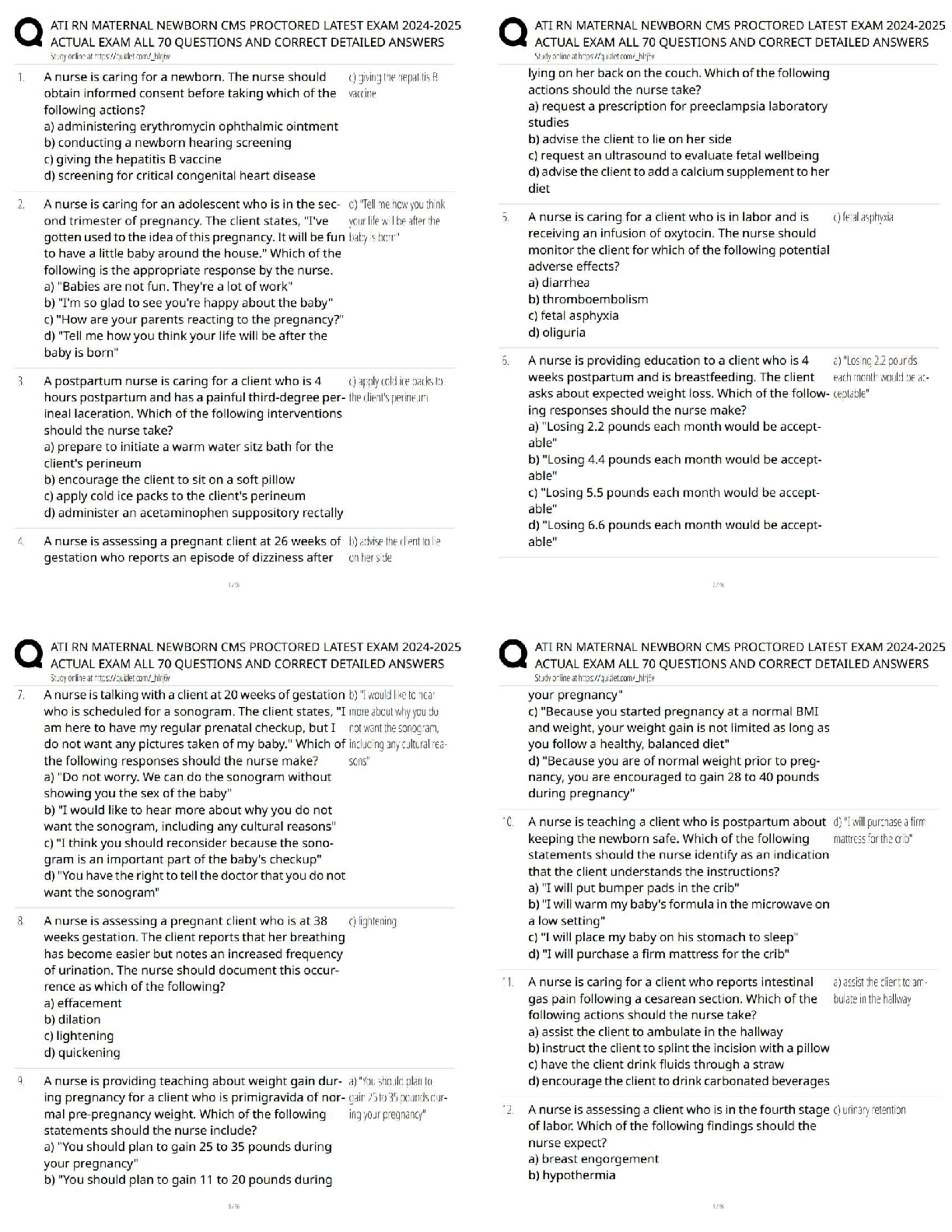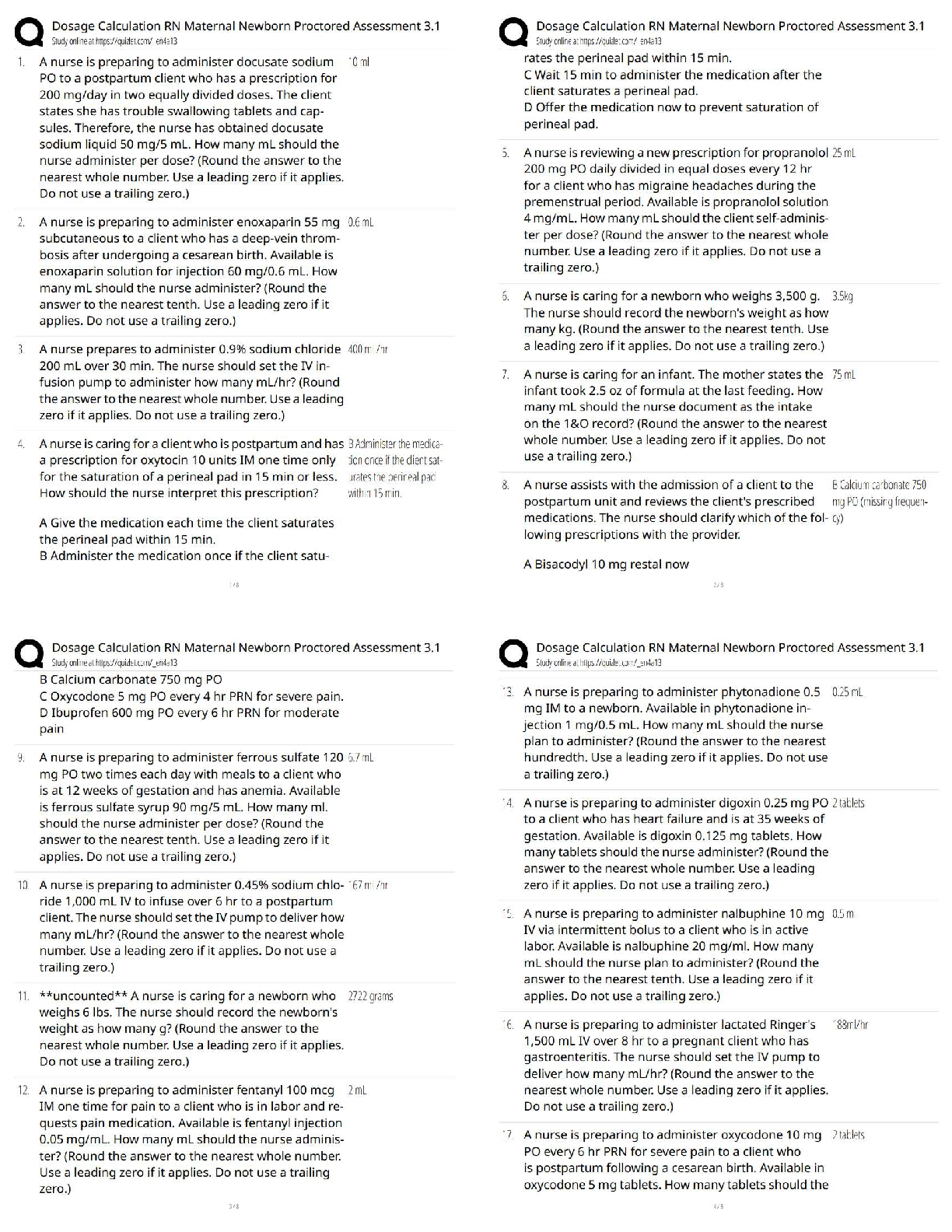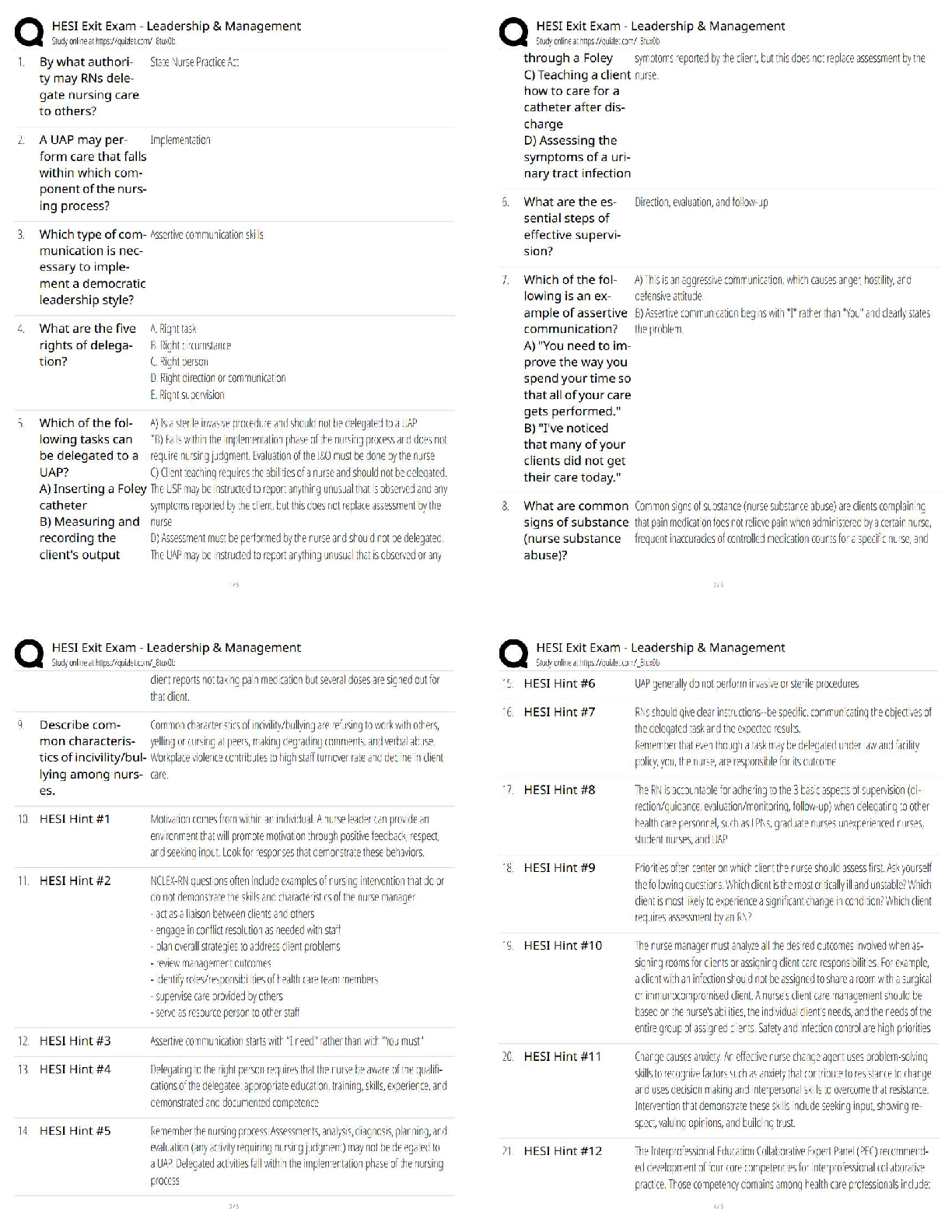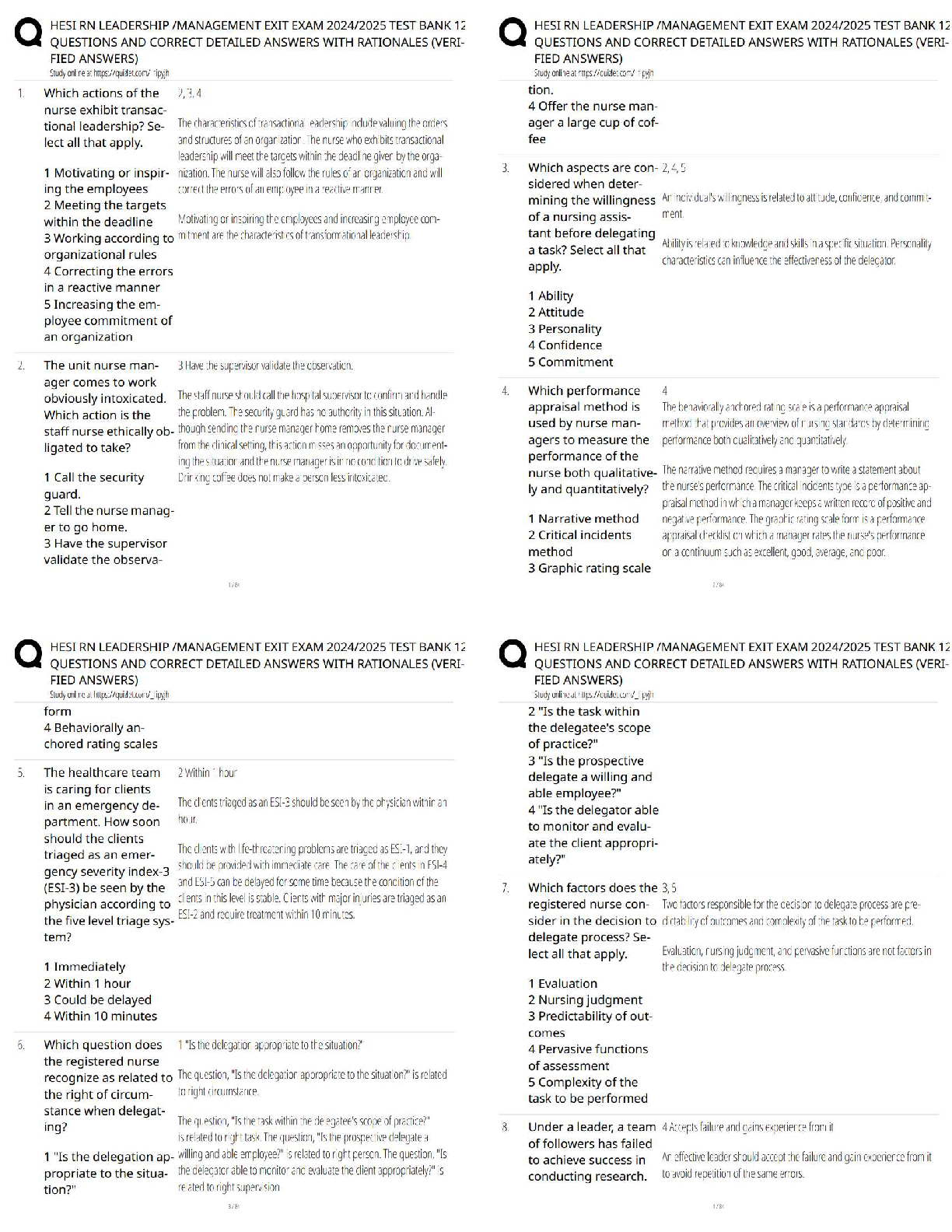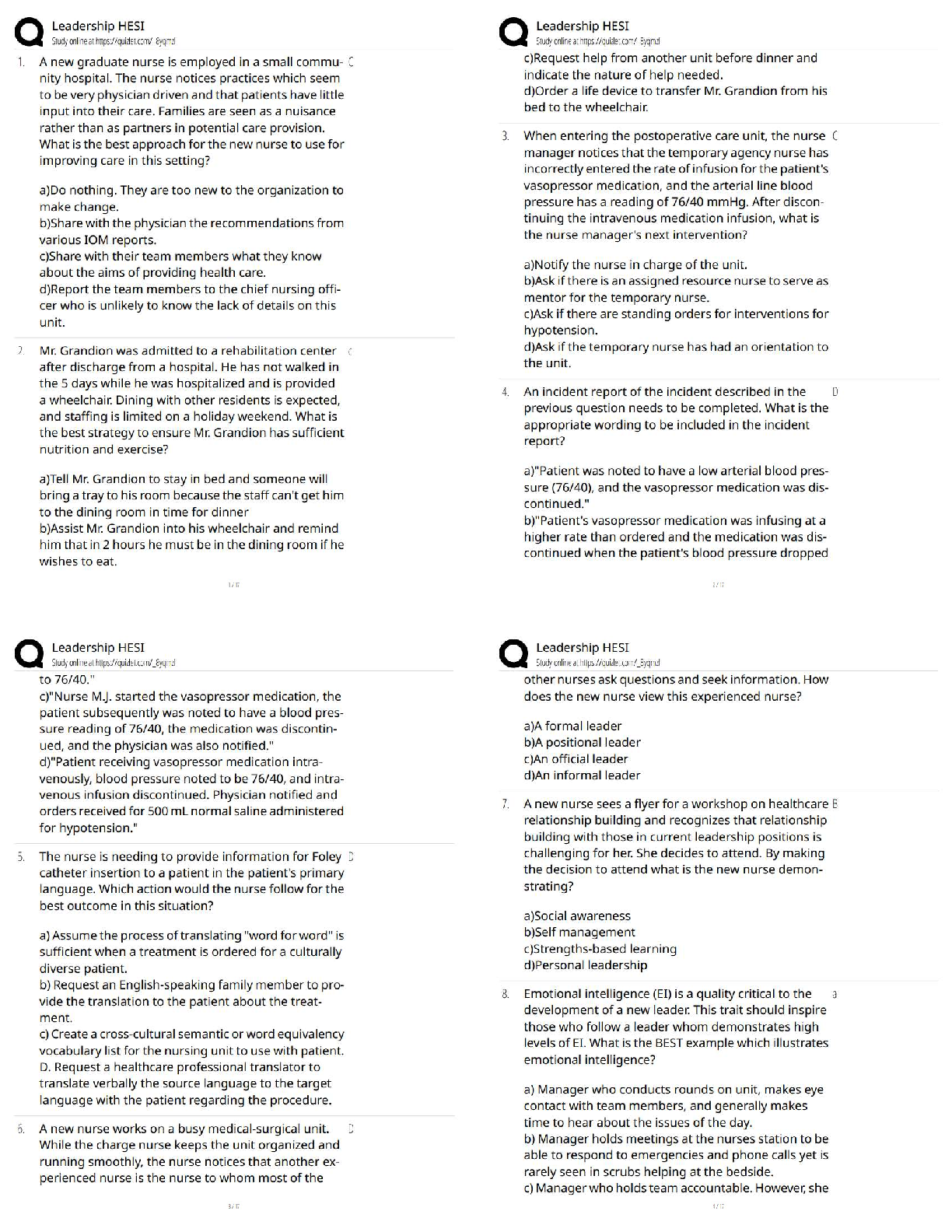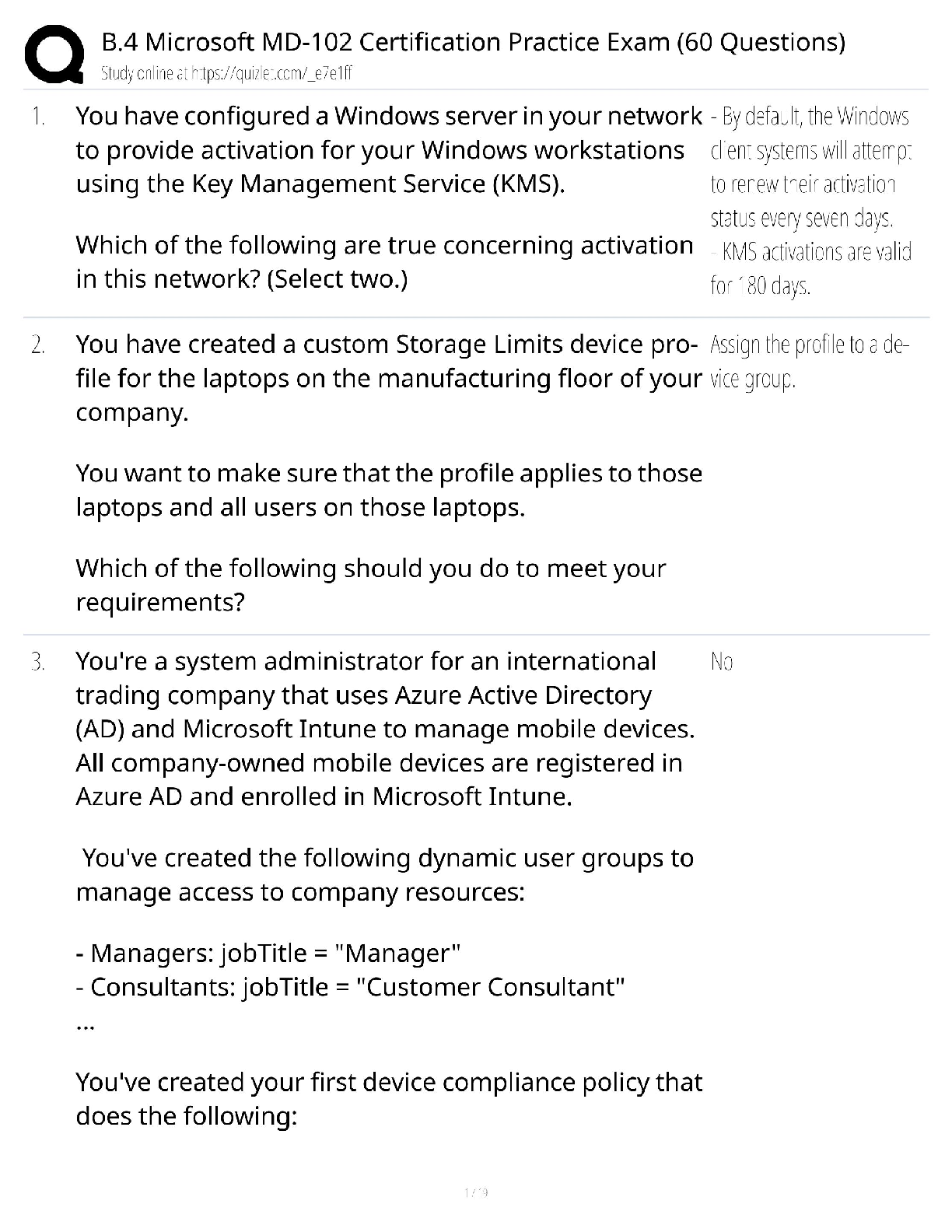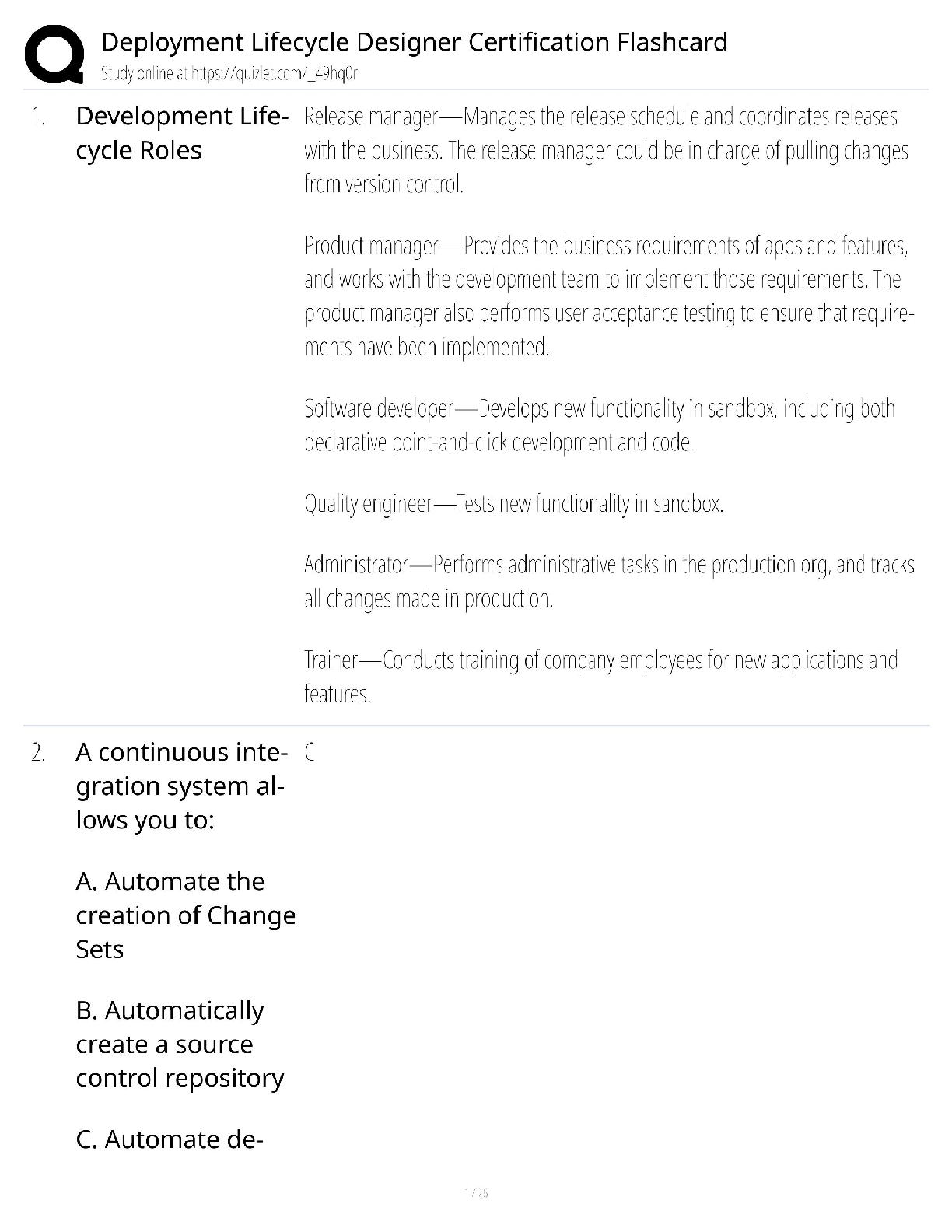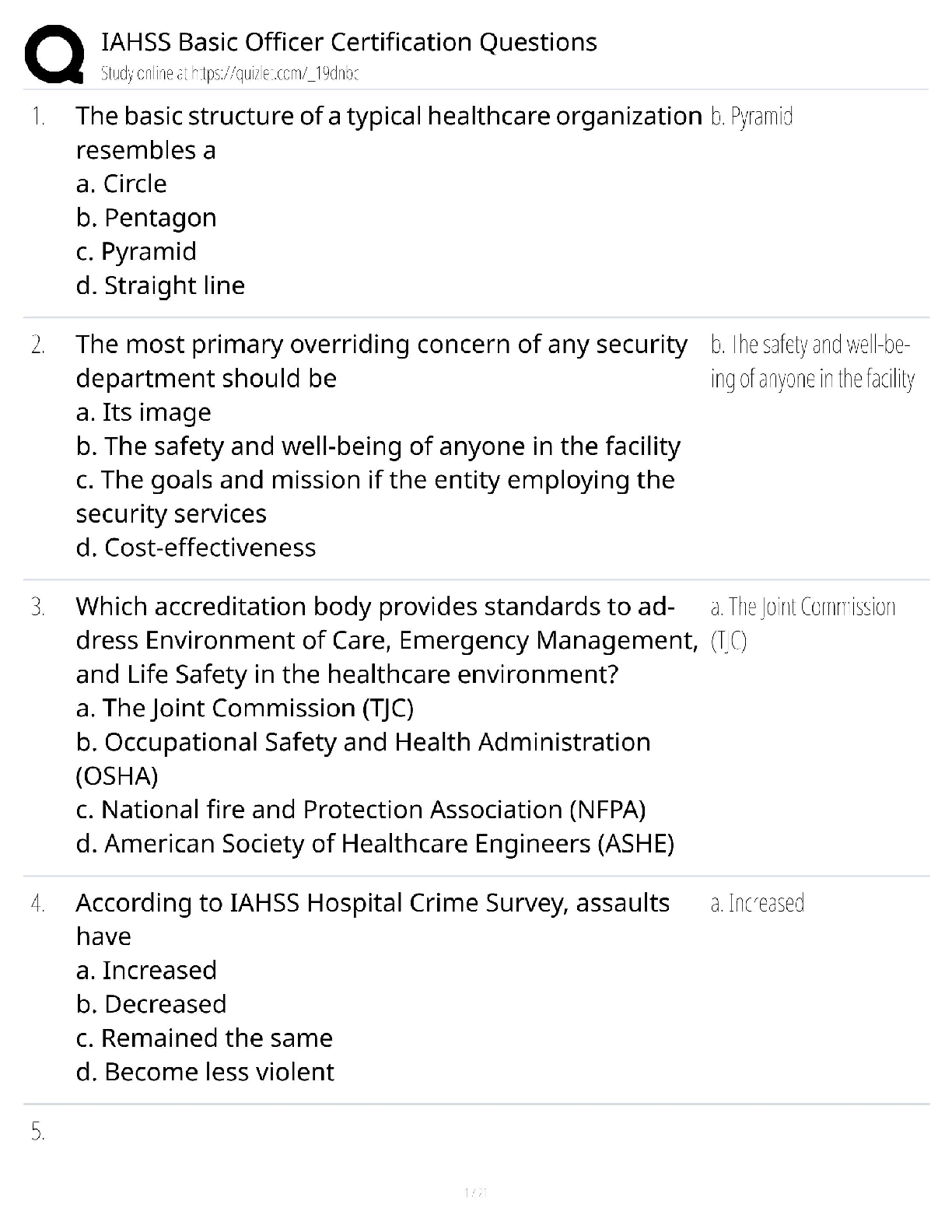Computer Networking > QUESTIONS & ANSWERS > The Bits and Bytes of Computer Networking (Week 4) Answered (All)
The Bits and Bytes of Computer Networking (Week 4) Answered
Document Content and Description Below
The Bits and Bytes of Computer Networking (Week 4) Answered 2023 DNS, or domain name system ✔✔ DNS, or domain name system, comes into play. DNS is a global and highly distributed network ser ... vice that resolves strings of letters into IP addresses for you. The process of using DNS to turn a domain name into an IP address is known as? ✔✔ Name Resolution. For a computer to operate on a modern network, they need to have a certain number of things configured. ✔✔ Remember, that MAC addresses are hard-coded and tied to specific pieces of hardware. IP address, subnet mask, and gateway for a host must be specifically configured, a DNS server is the fourth and final part of the standard modern network configuration. There are five primary types of DNS servers? ✔✔ caching name servers, recursive name servers, root name servers, TLD name servers, and authoritative name servers. Caching and recursive name servers are generally provided by an ISP or your local network. what is their purpose? ✔✔ Their purpose is to store domain name lookups for a certain amount of time. ✔✔ ISP or local network will generally have a caching name server available. Most caching name servers are also recursive name servers. Recursive name servers ✔✔ Recursive name servers are ones that perform full DNS resolution requests. All domain names in the global DNS system have a TTL or time to live. ✔✔ This is a value in seconds, that can be configured by the owner of a domain name for how long a name server is allowed to cache in an entry before it should discard it and perform a full resolution again. what happens when your local recursive server needs to perform a full recursive resolution? ✔✔ The first step is always to contact a root named server, there are 13 total root name servers and they're responsible for directing queries toward the appropriate TLD name server. these 13 root servers are mostly distributed across the globe via anycast. . What is Anycast? ✔✔ . Anycast is a technique that's used to route traffic to different destinations depending on factors like location, congestion, or link health. The root servers will respond to ✔✔ a DNS lookup with the TLD name server that should be queried. TLD (top-level domain) represents the top of the hierarchical DNS name resolution system. A TLD is the last part of any domain name ✔✔ .com Authoritative name servers ✔✔ Authoritative name servers are responsible for the last two parts of any domain name which is the resolution at which a single organization may be responsible for DNS lookups. Using www.weather.com as an example, ✔✔ Using www.weather.com as an example, the TLD name server would point a lookup at the authoritative server for Weather.com, which would likely be controlled by the Weather Channel, the organization itself that runs the site. finally ✔✔ the DNS lookup could be redirected at the authoritative server for weather.com which would finally provide the actual IP of the server in question. DNS is a great example of ✔✔ DNS is a great example of an application layer service that uses UDP for the transport layer instead of TCP. what can fit inside of a single UDP datagram, ✔✔ A single DNS request and its response can usually fit inside of a single UDP datagram, making it an ideal candidate for a connectionless protocol. what it would look like for a full DNS lookup to take place via TCP. ✔✔ First, the host making the DNS resolution request would send a SYN packet to the local name server on port 53, which is the port that DNS listens on. This name server would then need to respond with a SYN ACK packet, which means the original host would have to respond with an ACK in order to complete the three-way-handshake. ✔✔ The original computer sends a UDP packet to its local name server on port 53 asking for the IP for food.com, that's one packet. The local name server acts as a recursive server and sends up a UDP packet to the root server which sends a response containing the proper TLD name server, that's three packets. The recursive name server sends a packet to the TLD server and [Show More]
Last updated: 8 months ago
Preview 1 out of 11 pages
 Answered 2023.png)
Buy this document to get the full access instantly
Instant Download Access after purchase
Buy NowInstant download
We Accept:

Also available in bundle (1)
Click Below to Access Bundle(s)
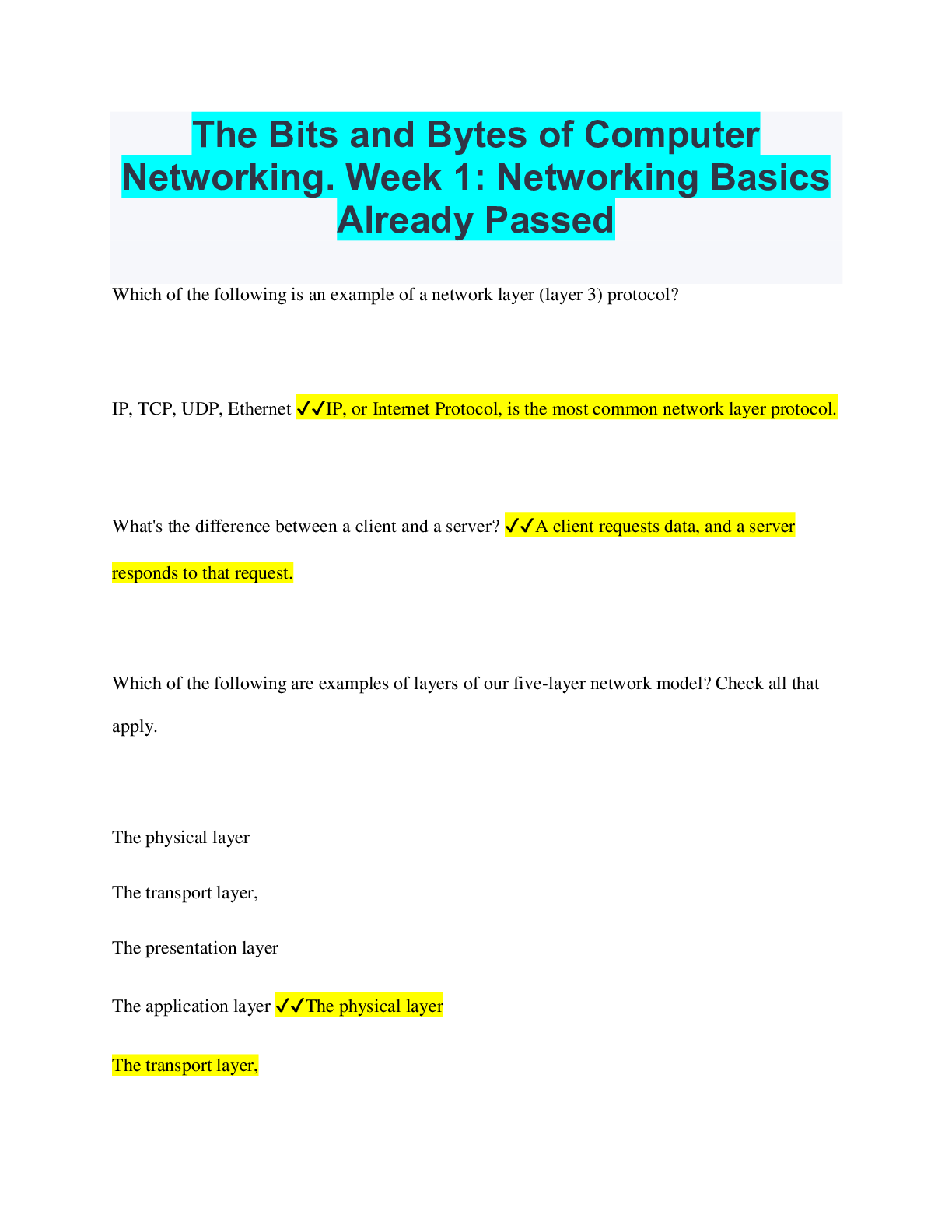
The Bits and Bytes of Computer Networking EXAMS Bundled Together with complete solutions Questions and Answers (Verified Answers)(Full Solution Pack)
The Bits and Bytes of Computer Networking. Week 6: Troubleshooting and the Future of Networking, Quiz Latest 2022-23 The Bits and Bytes of Computer Networking. Week 5: Connecting to the Internet, C...
By Crescent 2 years ago
$13
7
Reviews( 0 )
$5.00
Can't find what you want? Try our AI powered Search
Document information
Connected school, study & course
About the document
Uploaded On
Jan 12, 2023
Number of pages
11
Written in
All
Additional information
This document has been written for:
Uploaded
Jan 12, 2023
Downloads
0
Views
253

